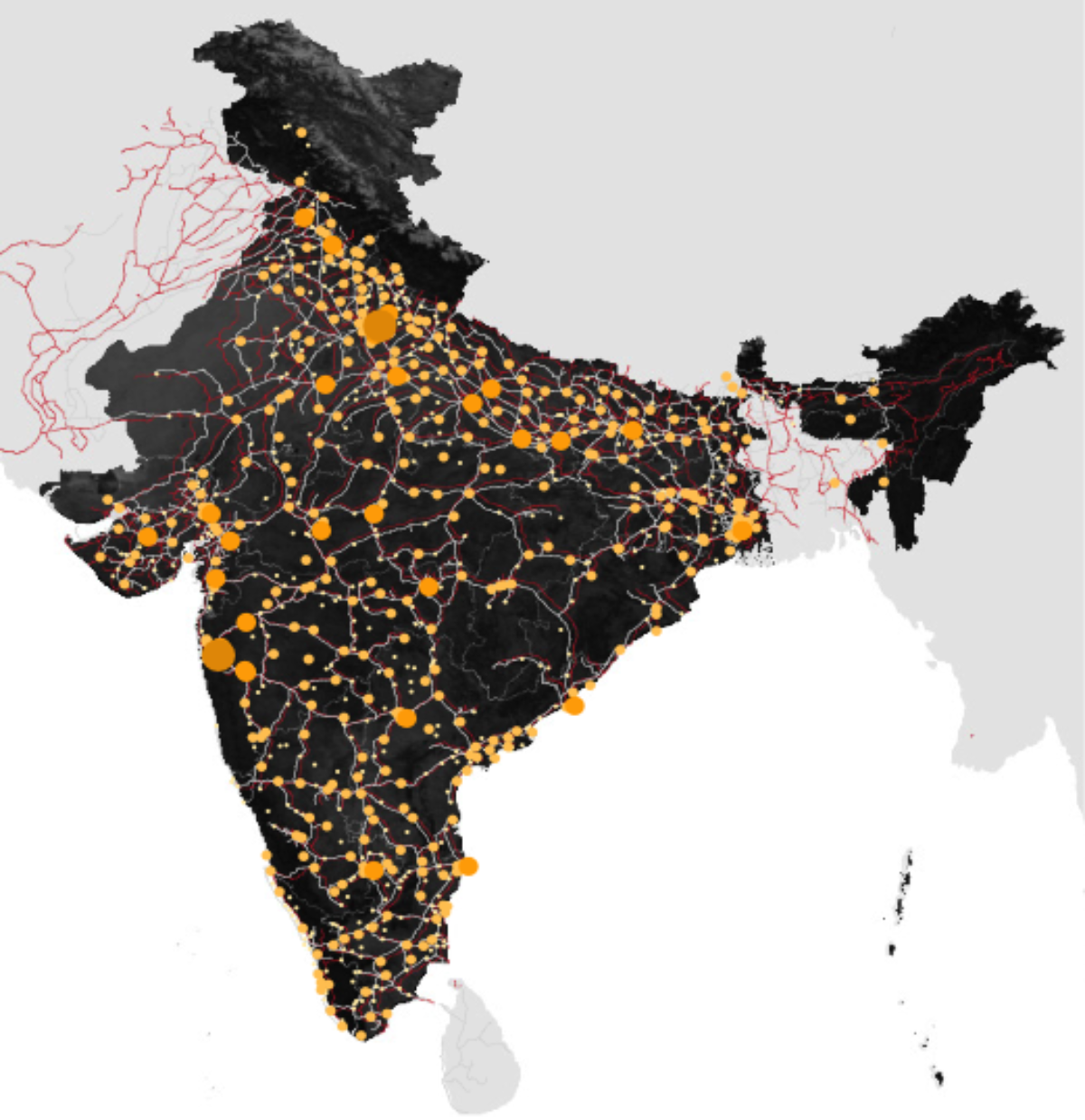Urban India Atlas

The Urban India Atlas project is a long-term critical assessment of emergent patterns of urban growth in India today. The investigation applies a range of spatial analysis techniques to better understand the logic (or lack thereof) behind urban, regional, and national development, and arrive at conclusions regarding future patterns of growth.
The study is unique in its focus on India’s large and medium- sized cities, in addition to the country’s megacities. A significant proportion of future urban growth will occur in what are typically defined as Tier II, Tier III, and Tier IV cities. Tier II cities are understood as rapidly expanding metropolitan centers with an average population of roughly 3 million residents, such as Jaipur and Lucknow. Tier III cities are defined as metropolitan areas with around 1.5 million residents, such as Asansol and Jamshedpur. Finally, Tier IV cities are characterized by a population of less than 1 million and include cities such as Bhubaneswar and Mysore.
In a class of their own are India’s world-class new towns, of which 25 are planned; one such town is Lavasa, a 25,000-acre private city currently under construction near Pune. Although many of these cities are seemingly insignificant when compared alongside Mumbai, Delhi, or Kolkata, many Tier II, Tier III, and Tier IV cities are advancing rigorous development plans and stand to see significant population growth in the coming decades. Other small and medium- sized cities are struggling to establish clear growth strategies or attract new investment, and are in danger of being left behind. The Urban India Atlas will catalog and account for these emergent trends of urbanization, with particular attention given to rapidly growing medium-sized cities.